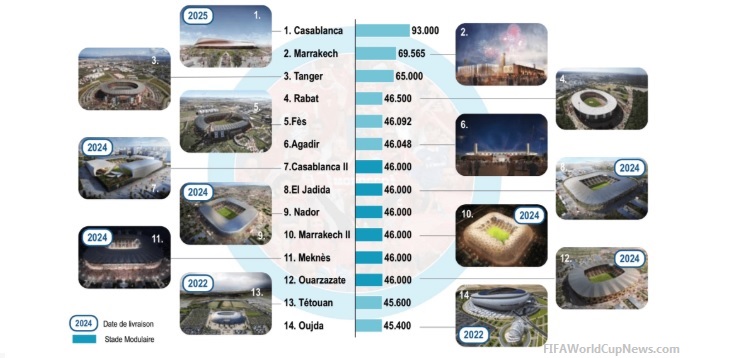

A total of six teams - one from each of the five confederations apart from Europe, plus an additional one from CONCACAF as host confederation - will take part. There will still be two places up for grabs through intercontinental playoffs to complete the 48. North, Central America and Caribbean: 6 (+3) In 2026, United States, Mexico and Canada will be included within the six places allocated to North, Central America and Caribbean (CONCACAF.) For the 2022 World Cup, Asia received the four automatic place PLUS Qatar as hosts. There are 17 additional qualifying places - 16 added slots plus the place for the hosts which is no longer reserved separately. Who gets the extra places at the 2026 World Cup?

Infantino says the money will be reinvested in football: "Increasing the size of teams which can participate will increase the investment in football development, to make sure that the teams can qualify." Infantino, who was originally elected to run FIFA on a proposal to expand to 40 teams, robustly defended the decision when it was announced in 2017, which FIFA projects will generate $1 billion more income and $640 million additional profit. The move from 32 to 48 teams is a 50% increase, and will make it difficult for any one country to host the event because of the venues and infrastructure required.

From 1954 onwards, the tournament featured 16 teams until it was increased to 24 for Spain '82, and then 32 for France '98. It started out with between 13 and 16 nations in 1930, 1934, 19. This is the largest expansion the World Cup has seen. So will the 2026 World Cup work, who will qualify and what could it look like? Why are there more nations at the 2026 World Cup? The World Cup has lasted around 32 days throughout the current format (though it was condensed into 29 in Qatar), but it will have to be at least 35 days if FIFA expands to a mammoth 104-game tournament from the 64 it is now. There are going to be more teams, more games, more kickoff times and a longer tournament.

It means the natural format of 32 teams in eight groups with the top two teams going through to create the perfect, 16-team knockout bracket is over. (FIFA president Gianni Infantino has indicated none of the hosts will have to go through qualifying.) In 2026, 48 teams take part in the World Cup - 45 qualifying nations plus the three host countries. It's all a generation of football fans has known, spanning 24 years and seven editions. The current format, which sees 32 teams drawn into eight groups of four nations feeding into the knockout rounds, first featured at France '98. World Cup 2022: News and features | Schedule | Bracket The 2022 World Cup draws to a close this weekend, marking the end of an era for the tournament before it rolls into the United States, Mexico and Canada in four years' time. What the World Cup will look like in 2026: 48 teams, more groups, more venues, more games
2026 fifa world cup upgrade#
Other supporting assets include a typographic wordmark which incorporates the 26 symbol on a smaller scale, the official FWC2026 event typeface paired with a secondary font called Noto Sans and various graphic patterns designed to amplify the 26 icon.You have reached a degraded version of because you're using an unsupported version of Internet Explorer.įor a complete experience, please upgrade or use a supported browser Examples include waves in Los Angeles referencing its beach location and the depiction of the Golden Gate Bridge on San Francisco’s logo. The main version of the logo features a largely monochromatic colour palette of black, white and gold, which also allows each host city to then express its culture and location through its own version. FIFA confirmed that the new emblem will inform “an identifiable brand structure for years to come”. The number is made up of 48 units of these shapes, representing the 48 competing nations. Squares and quarter circles make up the number 26 in reference to the squared edges of the pitch and the circle of the ball, according to FIFA. It will also introduce a bold depiction of the hosting year, which FIFA describes as “a vessel for self-expression”, designed so as not to distract from the event and the trophy element, according to the football body, which was unable to confirm who had designed the identity at the time of publication. Marking another first for the tournament, the official identity will feature a realistic expression of the World Cup trophy.


 0 kommentar(er)
0 kommentar(er)
